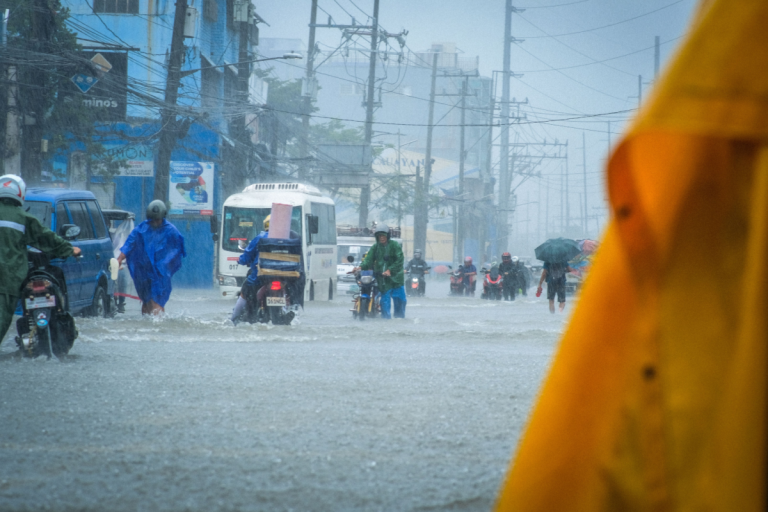Mass evacuations and severe damage
Southern China and Hong Kong launched massive cleanup operations on Thursday after Super Typhoon Ragasa, the most powerful tropical cyclone of the year, tore through the region. In Guangdong province, where more than 2 million residents had been evacuated, crews used excavators to clear toppled trees and blocked roads. More than 56,000 households in the province suffered power outages by Wednesday night.
Hong Kong resumed international flights, though kindergartens and some schools stayed closed. Authorities reported over 100 injuries in the city, while videos showed storm surges shattering the glass doors of luxury hotels and flooding lobbies. In Zhuhai, rescuers used inflatable boats to evacuate stranded residents, with water reaching the first floors of older homes.
Toll across Taiwan and the Philippines
The storm’s earlier path left deadly destruction across East Asia. In Taiwan, 14 people were killed after a barrier lake burst in Hualien, unleashing catastrophic flooding. In the Philippines, at least 11 deaths were reported. Ragasa peaked Monday with maximum sustained winds of 165 mph (265 km/h), equivalent to a Category 5 hurricane, before weakening as it crossed into southern China.
Across Yangjiang in Guangdong, state media reported more than 50,000 trees destroyed, underscoring the scale of devastation. Meanwhile in Macau, social media clips showed residents fishing in flooded streets with nets, plastic bags, and even dustpans, despite official warnings to stay indoors.
Regional response and ongoing risks
Although Ragasa has since weakened into a tropical storm, the threat of heavy rains continues for southern China, Vietnam, and other parts of Southeast Asia. Vietnam’s prime minister, Phạm Minh Chính, ordered preparations to secure infrastructure, protect fishing vessels, and activate search and rescue teams. Some flights were cancelled or rescheduled, and workers pruned trees to limit hazards from strong winds.
In Hong Kong, authorities lowered warnings to signal 3, its second-lowest typhoon alert, as the airport authority confirmed all three runways were operational and airlines would gradually resume services from Thursday morning.
Ongoing challenges
Ragasa’s impact highlights how densely populated coastal cities remain vulnerable despite significant investments in storm defenses. With climate change making tropical cyclones more frequent and intense, regional governments are under mounting pressure to strengthen resilience against future disasters. Cleanup and recovery are expected to take weeks across the affected areas.


